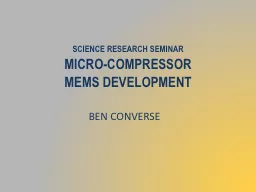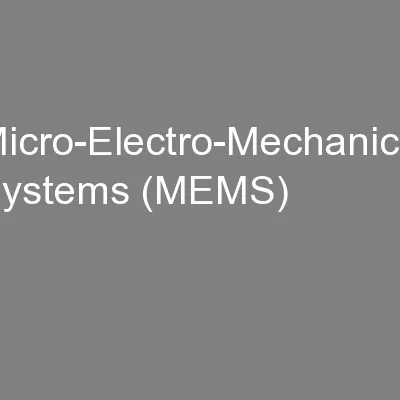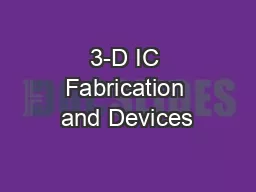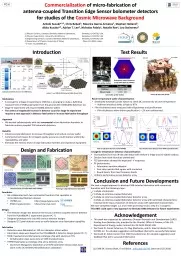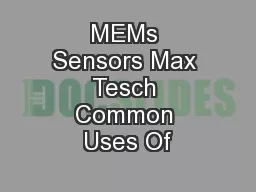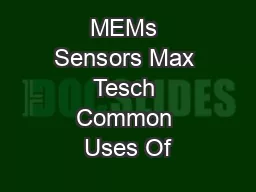PPT-MEMS Fabrication and Applications
Author : tatiana-dople | Published Date : 2020-04-05
Brought to you by Jack Link amp Aaron Schiller Date delivered on Friday the third of May 2013 ABSTRACT Taking a brief look at MicroElectroMechanical Systems MEMS
Presentation Embed Code
Download Presentation
Download Presentation The PPT/PDF document " MEMS Fabrication and Applications" is the property of its rightful owner. Permission is granted to download and print the materials on this website for personal, non-commercial use only, and to display it on your personal computer provided you do not modify the materials and that you retain all copyright notices contained in the materials. By downloading content from our website, you accept the terms of this agreement.
MEMS Fabrication and Applications: Transcript
Download Rules Of Document
" MEMS Fabrication and Applications"The content belongs to its owner. You may download and print it for personal use, without modification, and keep all copyright notices. By downloading, you agree to these terms.
Related Documents


